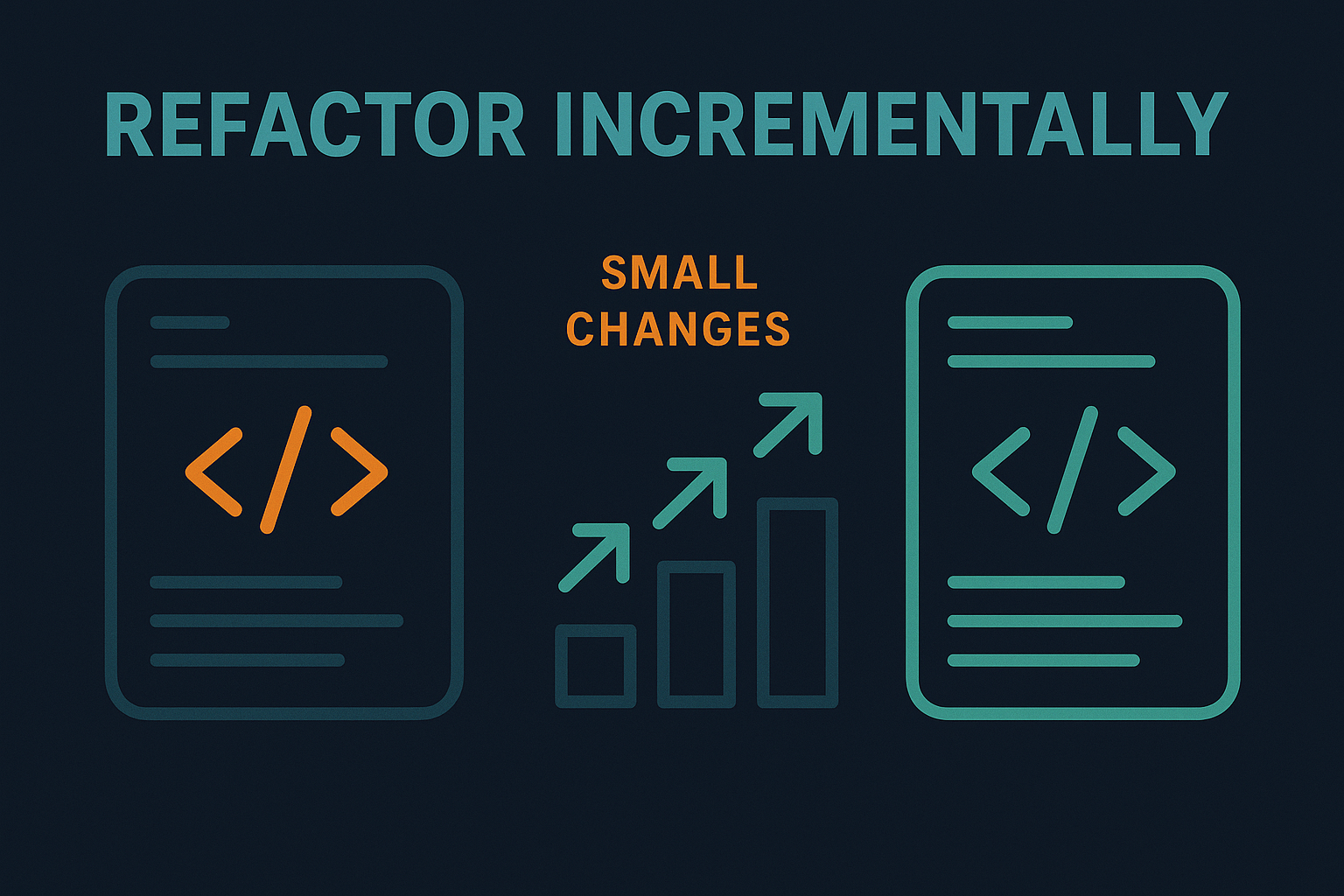Refactoring is an essential part of maintaining a healthy codebase, but it doesn’t have to be an overwhelming process. The key is to refactor incrementally—making small, manageable changes over time rather than attempting to overhaul everything at once.
Why incremental refactoring works:
- It reduces risk: Small changes are easier to test and less likely to introduce new bugs. If something does go wrong, it’s much easier to pinpoint the cause.
- It keeps the codebase stable: Large refactoring efforts can destabilize the entire system. By making incremental changes, you can improve the codebase without disrupting ongoing development.
- It’s more manageable: Developers are less likely to get overwhelmed by small, frequent changes than by a massive, time-consuming refactoring project.
Best practices for incremental refactoring:
- Keep refactoring commits separate from feature commits. This ensures that your changes are easy to track and review.
- Refactor code in small, focused chunks. Tackle one method, class, or module at a time.
- Always leave the code cleaner than you found it. Even small improvements can make a big difference over time.
Refactoring doesn’t have to be a monumental task. By making small, incremental changes, you can improve your codebase over time without the risk and disruption of a full-blown rewrite.

